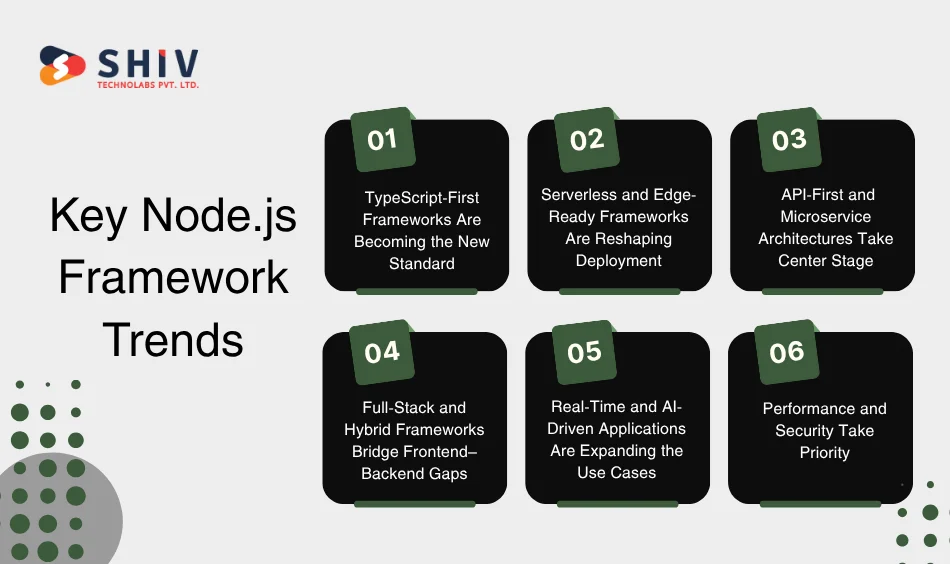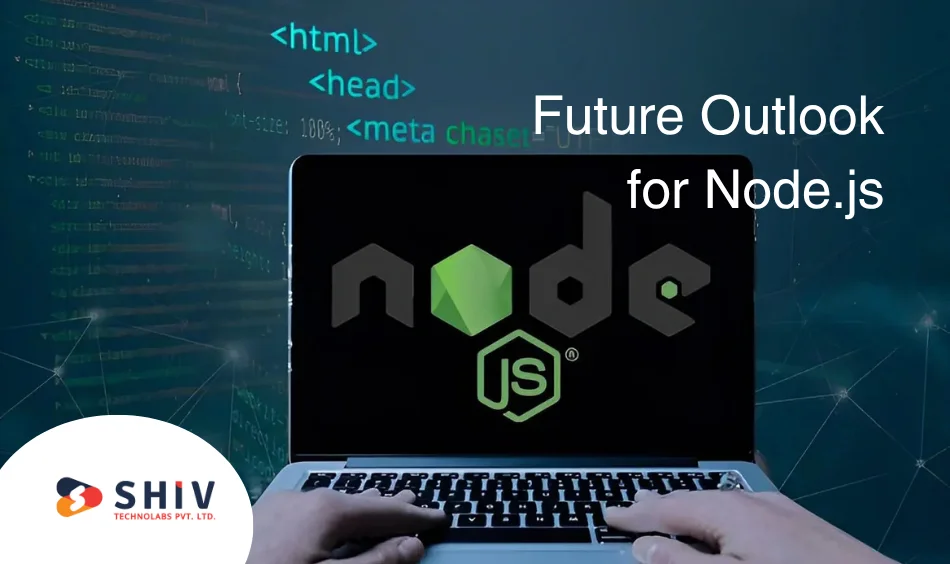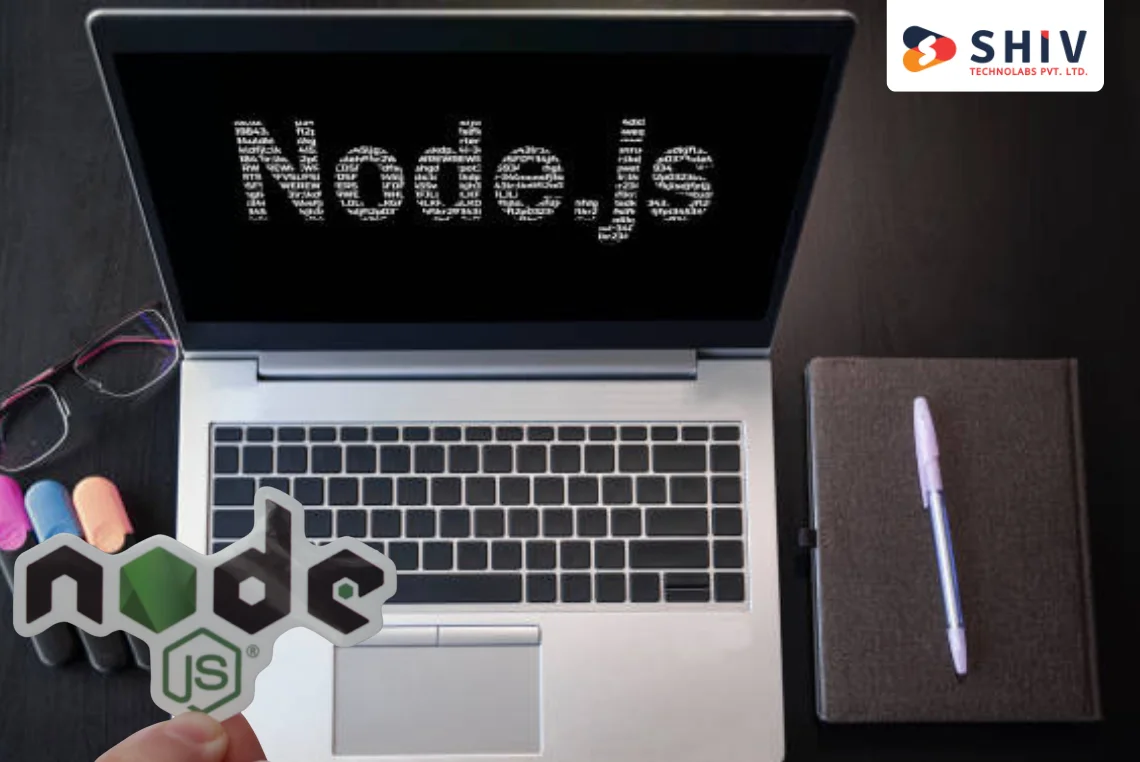Table of Contents
Node.js has transformed how web applications are built. Once known for its simplicity and event-driven model, it’s now the foundation for countless enterprise-grade and real-time solutions. Developers use it to power APIs, SaaS products, streaming apps, and even AI-driven systems.
The discussion will no longer be about “why to use Node.js” but which framework to build with. As projects grow in complexity, choosing the right foundation matters more than ever.
From minimalist frameworks like Express.js to modular and TypeScript-based options like NestJS, each brings a distinct advantage to performance, scalability, and developer experience.
Let’s look at the Node.js framework trends shaping web development this year — and what developers are focusing on to build faster, cleaner, and more reliable applications.
Why Frameworks Matter in Node.js Development?
Writing backend logic in pure Node.js can be powerful — but it often means reinventing basic components like routing, middleware, and error handling. That’s where frameworks come in. They provide structure, conventions, and reusable modules that make development cleaner and faster.
Frameworks like Express.js, NestJS, and Fastify help developers focus on solving real business problems instead of managing low-level configurations. They standardize how requests are handled, how APIs are built, and how data flows between the client and server.
For modern teams, Node.js frameworks are more than convenience tools — they’re foundations for scalability, security, and maintainability. Whether it’s building microservices, integrating real-time features, or deploying apps to edge environments, frameworks shape how efficiently teams can deliver new features.
In short, the right framework transforms Node.js from a runtime into a complete web development ecosystem.
Key Node.js Framework Trends

Node.js continues to dominate backend development due to its performance, scalability, and active community. But what truly keeps it relevant year after year is how its frameworks evolve.
Nowadays, the focus is shifting toward speed, modularity, and maintainability — reflecting how teams build and deploy web apps in a multi-cloud, serverless world.
Below are the defining framework trends driving Node.js development this year.
1. TypeScript-First Frameworks Are Becoming the New Standard
TypeScript has become inseparable from Node.js. Developers no longer treat it as an add-on — it’s now the foundation of most new frameworks.
Why this matters:
- It reduces runtime errors and improves code predictability.
- Large teams benefit from static typing and better IDE support.
- Cleaner architecture allows faster onboarding for new developers.
Leading examples:
- NestJS: Built entirely around TypeScript, it uses dependency injection and decorators for structured, modular code.
- AdonisJS: Offers Laravel-style MVC architecture with TypeScript baked in.
- tRPC + Next.js: Enables end-to-end type safety across APIs and front-end layers.
Impact:
Enterprises adopting TypeScript-first Node.js frameworks report shorter QA cycles, fewer bugs in production, and easier collaboration between backend and frontend teams.
2. Serverless and Edge-Ready Frameworks Are Reshaping Deployment
The traditional “server-based” model is losing ground. Developers are building APIs that scale automatically using AWS Lambda, Vercel Edge Functions, and Cloudflare Workers.
Why this matters:
- Serverless apps eliminate idle resource costs.
- Edge computing reduces latency by processing requests closer to the user.
- Node.js frameworks optimized for these environments allow global reach with minimal infrastructure overhead.
Leading examples:
- Fastify: Designed for low-latency APIs, perfectly suited for Lambda or containerized functions.
- SvelteKit + Node backends: Deliver server-rendered content from the edge in milliseconds.
- Next.js (Node-powered): Enables hybrid rendering — static + dynamic — with edge execution.
Impact:
Serverless-ready frameworks make Node.js an excellent choice for startups and global platforms targeting performance across regions without managing heavy infrastructure.
3. API-First and Microservice Architectures Take Center Stage
As applications grow, developers break them into smaller, independent services — and Node.js frameworks are adapting to this architecture.
Why this matters:
- Microservices allow scaling specific parts of an application independently.
- Teams can use different frameworks or languages without dependency issues.
- APIs (REST, GraphQL, or gRPC) act as reliable bridges between services.
Leading examples:
- Express.js: Still the most trusted framework for REST API development.
- Koa: Ideal for modular middleware in distributed architectures.
- Hapi.js: Offers configuration-driven control and validation — perfect for enterprise-grade APIs.
- Fastify: Integrates easily with microservice platforms using its plugin-based structure.
Impact:
API-first frameworks simplify versioning, documentation, and third-party integration — making Node.js the go-to environment for building scalable ecosystems and SaaS backends.
4. Full-Stack and Hybrid Frameworks Bridge Frontend–Backend Gaps
Developers increasingly prefer working in unified ecosystems. Frameworks that handle both front-end rendering and backend logic are becoming central to how teams build modern apps.
Why this matters:
- Shared codebases reduce maintenance.
- Developers can switch between front-end and back-end tasks easily.
- Real-time sync and reactivity are built into these systems.
Leading examples:
- Meteor.js: One of the earliest full-stack Node.js frameworks, still evolving with modern integrations.
- Remix and Next.js: Combine server-side rendering with API routes, improving SEO and performance.
- AdonisJS: Manages MVC structure, database ORM, and authentication under one framework.
Impact:
These frameworks simplify development for startups and small teams who want to move fast without managing separate stacks — ideal for SaaS tools, dashboards, and collaborative platforms.
5. Real-Time and AI-Driven Applications Are Expanding the Use Cases
Node.js has always been a favorite for real-time applications, but in 2025, its reach has extended into AI-powered workflows and data streaming.
Why this matters:
- Modern apps demand instant updates and event-based processing.
- Node.js excels in handling concurrent requests through its non-blocking I/O.
- Frameworks are adding native support for WebSockets, event emitters, and AI model integration.
Leading examples:
- Socket.io: Still the backbone for chat apps, dashboards, and multiplayer gaming platforms.
- Feathers.js: Provides a REST + WebSocket hybrid layer for real-time APIs.
- NestJS with OpenAI or TensorFlow APIs: Used in AI chat systems and predictive analytics dashboards.
Impact:
This convergence of AI and real-time data makes Node.js a vital part of modern digital experiences — from collaborative workspaces to intelligent recommendation engines.
6. Performance and Security Take Priority
As projects scale, developers are prioritizing frameworks that can handle millions of requests without compromising security.
Why this matters:
- Faster response times improve UX and SEO.
- Built-in security layers reduce exposure to common threats.
- Lightweight frameworks consume fewer server resources.
Leading examples:
- Fastify: Handles up to 30–40% more requests per second than Express.
- Hapi.js: Offers strict input validation, caching, and authentication plugins.
- Koa.js: A Minimal middleware stack improves runtime efficiency and security control.
Impact:
Frameworks focusing on both speed and data protection are becoming a default choice for finance, healthcare, and enterprise SaaS systems where compliance and uptime are critical.
What do These Trends Mean for Developers?
In short, it is not about “which framework is fastest” — it’s about finding the right fit.
- Startups prefer Fastify or Express for rapid MVPs.
- Enterprises rely on NestJS or Hapi for structure and long-term maintenance.
- AI and real-time apps thrive on Feathers or Socket.io integrations.
The Node.js ecosystem is no longer one-size-fits-all — it’s an adaptable foundation for everything from serverless APIs to edge-powered AI apps.
Top Node.js Frameworks
With dozens of Node.js frameworks available, a few have consistently proven their value through speed, scalability, and developer community support.
Here are the top choices leading the 2025 ecosystem — each serving a different purpose and development style.
| Framework | Key Highlights | GitHub Stars | Best For |
|---|---|---|---|
| Express.js | Minimalist, unopinionated, perfect for REST APIs. Mature ecosystem and wide adoption. | 65K+ | Small to mid-scale APIs and web apps |
| NestJS | TypeScript-first, modular architecture, dependency injection, enterprise-ready. | 62K+ | Scalable enterprise apps and microservices |
| Fastify | High-performance and lightweight; built for low latency and fast JSON handling. | 30K+ | Serverless APIs and event-driven apps |
| Koa.js | Developed by the same team as Express, async middleware, and minimal overhead. | 35K+ | Custom middleware pipelines and microservices |
| AdonisJS | MVC-based full-stack framework inspired by Laravel; includes ORM and CLI tools. | 15K+ | SaaS, dashboards, and full-stack web apps |
| Hapi.js | Security-focused and configuration-driven, ideal for stable enterprise APIs. | 15K+ | Complex systems need strong validation and caching |
| Meteor.js | Unified front-end and back-end development with real-time sync. | 43K+ | Real-time and data-driven full-stack apps |
Each of these frameworks continues to evolve, supporting TypeScript, real-time communication, and compatibility with modern deployment methods like Docker, Kubernetes, and edge functions.
Comparing Frameworks for Different Use Cases
Choosing a Node.js framework often depends on your project’s complexity, team size, and scalability needs. Each framework offers unique advantages — from simplicity to enterprise-grade structure.
Here’s how they stack up across common development goals:
| Use Case | Recommended Frameworks | Why It Fits |
|---|---|---|
| Rapid Prototyping & MVPs | Express.js, Fastify | Simple setup, quick routing, large library support, and minimal configuration. Ideal for startups validating an idea fast. |
| Enterprise-Grade Applications | NestJS, Hapi.js | Modular, TypeScript-based, and built for scalability. Suits projects with multiple teams and layered architecture. |
| Full-Stack & Real-Time Apps | Meteor.js, AdonisJS, Feathers.js | Unified structure for front-end and back-end. Handles live updates and data sync with minimal effort. |
| Serverless & Edge Deployments | Fastify, Koa.js | Lightweight, low-latency frameworks that integrate well with AWS Lambda, Cloudflare Workers, and Vercel Edge Functions. |
| API-First & Microservices | Express.js, Koa.js, NestJS | Designed for distributed systems. Supports REST, GraphQL, and gRPC communication patterns effectively. |
This diversity is what makes the Node.js ecosystem so adaptable. Developers can match frameworks to both short-term delivery and long-term scalability goals — without switching languages or ecosystems.
Future Outlook for Node.js

The future of Node.js looks stronger than ever. It continues to be a preferred backend technology for startups and enterprises that need real-time, data-intensive applications. Several trends are reshaping how Node.js fits into modern web development.
- Deeper TypeScript Integration: TypeScript adoption is accelerating across nearly every major Node.js framework. This shift brings more predictable behavior, better tooling, and safer refactoring — making enterprise-grade apps easier to maintain.
- Edge and Serverless Computing: Node.js is evolving to serve users closer to their location. With edge deployments on platforms like Vercel, Netlify, and Cloudflare, developers can achieve sub-second response times and better resource efficiency.
- AI and Data-Driven Features: Frameworks are being extended to handle live analytics, natural language inputs, and streaming data from AI models. Node.js is playing a growing role in connecting AI inference layers with user-facing apps.
- WebAssembly and Hybrid Architectures: Experimental integrations with WebAssembly (WASM) allow Node.js apps to run CPU-intensive tasks faster. Hybrid stacks that combine Rust, Go, or Python modules with Node.js APIs are also gaining ground.
- Security and Compliance by Default: Frameworks are focusing on built-in validation, encrypted data handling, and compliance features to meet enterprise standards like GDPR, SOC 2, and ISO 27001.
Together, these changes signal that Node.js isn’t slowing down — it’s expanding into new territories where speed, flexibility, and scalability are essential.
Conclusion
Node.js has grown far beyond being just a server-side runtime. It has become the backbone of modern web and app ecosystems — powering APIs, SaaS platforms, real-time dashboards, and even AI-driven products.
Frameworks such as NestJS, Fastify, and Koa are setting higher standards for scalability and performance. Meanwhile, mature tools like Express.js and Hapi continue to evolve, offering reliability that developers trust. The focus has shifted from simply “building apps” to building maintainable, modular, and high-performing systems.
As technology stacks continue to blend front-end and back-end capabilities, Node.js remains one of the most adaptive choices for web developers worldwide. Its community, tooling, and cross-platform compatibility make it a safe bet for both emerging startups and established enterprises.
The real advantage lies not in choosing the most popular framework — but in choosing the one that fits your project’s scale, structure, and long-term vision.
At Shiv Technolabs, our developers actively work with modern Node.js frameworks like NestJS, Fastify, and AdonisJS to build scalable, secure, and future-ready web applications.




















